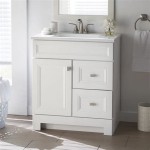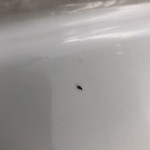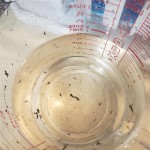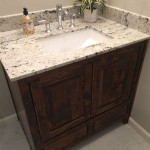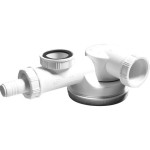Moen bathroom faucets are known for their durability and stylish designs, but like any plumbing fixture, they can experience issues over time. Common problems range from leaks and drips to reduced water flow and stiff handles. Fortunately, many of these issues can be resolved with basic tools and a bit of know-how. This article provides a comprehensive guide to repairing common problems with Moen bathroom faucets.
Repairing Moen Bathroom Faucets: A Comprehensive Guide
Before initiating any repairs, it is crucial to identify the specific Moen faucet model. This information is often found on the original packaging, the installation manual, or sometimes etched on the faucet itself. Knowing the model number is essential for sourcing the correct replacement parts and consulting model-specific diagrams or repair instructions available on the Moen website or other online resources.
Safety is paramount when working with plumbing. Always turn off the water supply to the faucet before commencing any repair work. Typically, shut-off valves are located underneath the sink. If individual shut-off valves are not present, the main water supply to the house must be turned off. Ensure all water pressure is relieved from the faucet by opening the faucet handle after shutting off the water supply. Have a bucket and towels readily available to catch any residual water and prevent potential water damage.
Identifying and Addressing Common Moen Faucet Issues
Moen faucets can manifest a variety of problems, each requiring a specific diagnosis and repair approach. Understanding the most frequent issues is the first step towards successful faucet repair.
Dripping Faucets: A persistent drip is often caused by a worn-out cartridge, O-ring, or valve seat. Mineral deposits can also accumulate over time, interfering with the proper seal of these components. Identifying the source of the drip is crucial. If the drip originates from the spout, the cartridge is the most likely culprit. Drips around the base of the faucet may indicate a worn O-ring. Leaks from the handle often point to problems within the handle mechanism or the cartridge itself.
Reduced Water Flow: Decreased water pressure can be caused by mineral buildup in the aerator, the faucet cartridge, or the supply lines. The aerator is typically the easiest component to inspect and clean. Mineral deposits can be dissolved by soaking the aerator in white vinegar for several hours. If the aerator is damaged beyond cleaning, it should be replaced. If the issue persists after cleaning the aerator, the cartridge or supply lines should be investigated.
Stiff or Difficult-to-Turn Handles: A stiff handle is often a result of mineral buildup or corrosion within the faucet's internal mechanisms. This can affect the cartridge, the handle mechanism, or the valve stem. Lubricating these components with a silicone-based plumber's grease can often alleviate the problem. In some cases, the cartridge may need to be replaced if lubrication is insufficient.
Leaks Around the Faucet Base: Leaks at the base of the faucet typically indicate a problem with the O-rings or seals that provide a watertight connection between the faucet body and the sink. These O-rings can dry out, crack, or become damaged over time, compromising their ability to seal properly. Replacing the affected O-rings is usually the solution.
Step-by-Step Guide to Cartridge Replacement
The faucet cartridge is a critical component that controls water flow and temperature. Replacing a worn or damaged cartridge is a common repair for dripping or stiff handles. The following steps outline the general procedure, but it's important to consult the specific instructions for the particular Moen faucet model.
Step 1: Turning Off the Water Supply: Before commencing any work, ensure the water supply to the faucet is completely shut off. This involves turning off the shut-off valves located beneath the sink or, if these are unavailable, shutting off the main water supply to the house. Relieve any residual water pressure by opening the faucet handle.
Step 2: Removing the Handle: The method for removing the handle varies depending on the faucet model. Typically, a small setscrew located on the side or beneath the handle must be loosened using an Allen wrench. Once the setscrew is loosened, the handle can usually be pulled straight off. Some models may have a decorative cap that needs to be pried off to access the setscrew.
Step 3: Disassembling the Faucet: After removing the handle, the faucet's internal components will be exposed. This may include a retaining clip, a decorative sleeve, or other hardware that needs to be removed to access the cartridge. Take note of the order in which these parts are removed, as they will need to be reassembled in the same order.
Step 4: Removing the Old Cartridge: The cartridge is typically held in place by a retaining clip or a brass nut. Remove the retaining clip or loosen the nut using a wrench. Some cartridges may be difficult to remove due to mineral buildup. A cartridge puller tool can be used to extract the cartridge without damaging the faucet body. If a cartridge puller is not available, gentle twisting and pulling with pliers can often work, but care should be taken to avoid damaging the faucet.
Step 5: Installing the New Cartridge: Before installing the new cartridge, ensure the faucet body is clean and free of any debris or mineral deposits. Apply a thin layer of silicone grease to the O-rings on the new cartridge. Align the new cartridge correctly, noting any markings or guides on the faucet body or cartridge. Insert the cartridge into the faucet body and secure it with the retaining clip or brass nut.
Step 6: Reassembling the Faucet: Reassemble the faucet components in the reverse order of disassembly. Ensure all parts are properly aligned and secured. Tighten the handle setscrew securely to prevent the handle from loosening over time.
Step 7: Testing the Faucet: After reassembling the faucet, slowly turn the water supply back on. Check for any leaks around the faucet base, handle, or spout. Operate the faucet handle to ensure smooth operation and proper temperature control. If any leaks are detected, double-check the installation of the cartridge and other components.
Addressing Leaks Around the Faucet Base
Leaks around the base of the faucet usually indicate issues with the O-rings that seal the faucet to the sink. Replacing these O-rings is a relatively straightforward process.
Step 1: Shutting Off the Water Supply: As with any faucet repair, begin by turning off the water supply beneath the sink or at the main water shut-off valve. Relieve any pressure in the faucet lines.
Step 2: Disconnecting the Water Supply Lines: Disconnect the hot and cold water supply lines from the faucet. Use a basin wrench to loosen the connections carefully. Have a bucket and towels ready to catch any residual water in the lines.
Step 3: Removing the Faucet: Most Moen faucets are secured to the sink with mounting nuts located underneath the sink. Loosen and remove these nuts using a basin wrench. Once the mounting nuts are removed, the faucet can be lifted out of the sink.
Step 4: Replacing the O-Rings: Inspect the O-rings located on the base of the faucet. These are usually visible once the faucet is removed. Carefully remove the old O-rings. Clean the area where the O-rings were located to remove any debris or mineral deposits. Lubricate the new O-rings with silicone grease and install them in the correct positions.
Step 5: Reinstalling the Faucet: Position the faucet back into the sink and secure it with the mounting nuts. Tighten the nuts evenly to ensure a secure and watertight connection. Reconnect the hot and cold water supply lines to the faucet.
Step 6: Testing for Leaks: Slowly turn the water supply back on and check for leaks around the base of the faucet and the supply line connections. If leaks are present, tighten the mounting nuts or supply line connections as needed.
Cleaning and Maintaining Moen Faucets
Regular cleaning and maintenance can significantly extend the lifespan of Moen bathroom faucets and prevent many common problems. Avoid using abrasive cleaners or scouring pads, as these can damage the faucet's finish. Instead, use a mild soap and water solution to clean the faucet regularly. Wipe the faucet dry after each use to prevent water spots and mineral buildup.
Periodically inspect the aerator for mineral buildup and clean it as needed. Soaking the aerator in white vinegar is an effective way to dissolve mineral deposits. Lubricate moving parts, such as the handle mechanism and valve stem, with silicone grease to ensure smooth operation. If you have hard water, consider installing a water softener to reduce mineral buildup in your plumbing system.
By following these steps and performing regular maintenance, many common Moen bathroom faucet problems can be resolved, saving the cost of hiring a plumber. However, for complex or persistent issues, consulting a qualified plumbing professional is always recommended.

How To Fix A Dripping Moen Faucet Howtolou Com

How Do I Replace My Moen Bathroom Faucet Cartridge

How To Replace Repair A Leaky Moen Cartridge In Bathroom Set Of Faucets Single Lever Tips Faucet Shower

Tighten A Loose Lever On Moen Brantford Faucet

Moen Faucet Stuck How To Remove A Monticello Tools For Removing Bathroom Facuet

How To Remove Moen Bathroom Faucet Handle In 2 Steps

How To Repair Moen Bathroom Faucet Dripping Water Cartridge Removal Replace Single Lever

Moen 2 Handle Replacement Cartridge For Roman Tub Faucets 1248 The Home Depot

Easy Moen Bathroom Faucet Drip Repair
Moen Liso Single Hole Bathroom Faucet Costco

